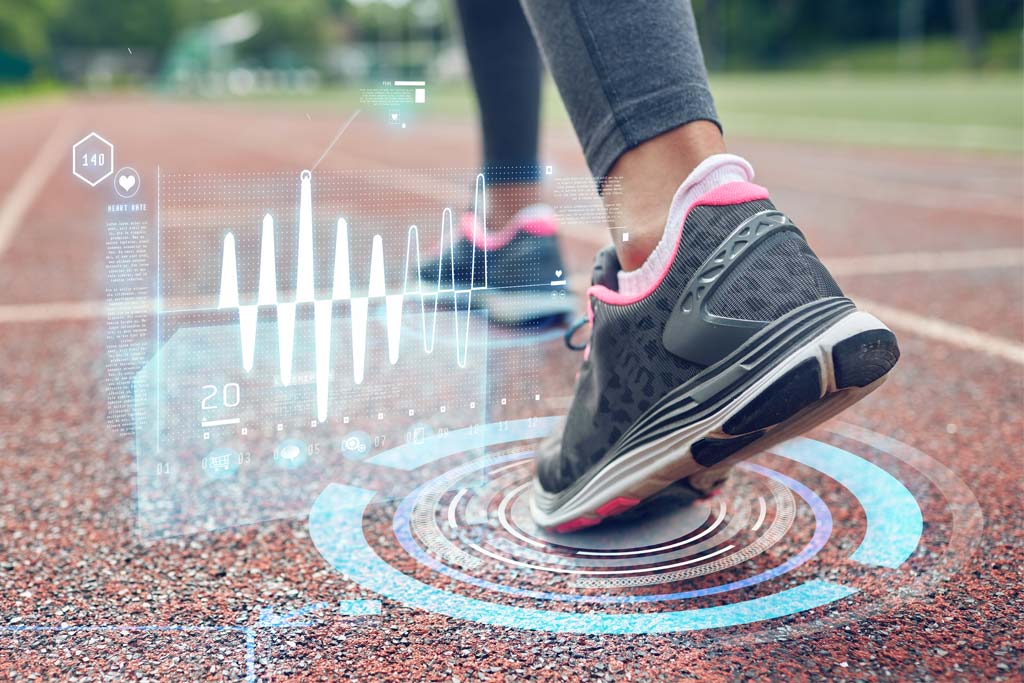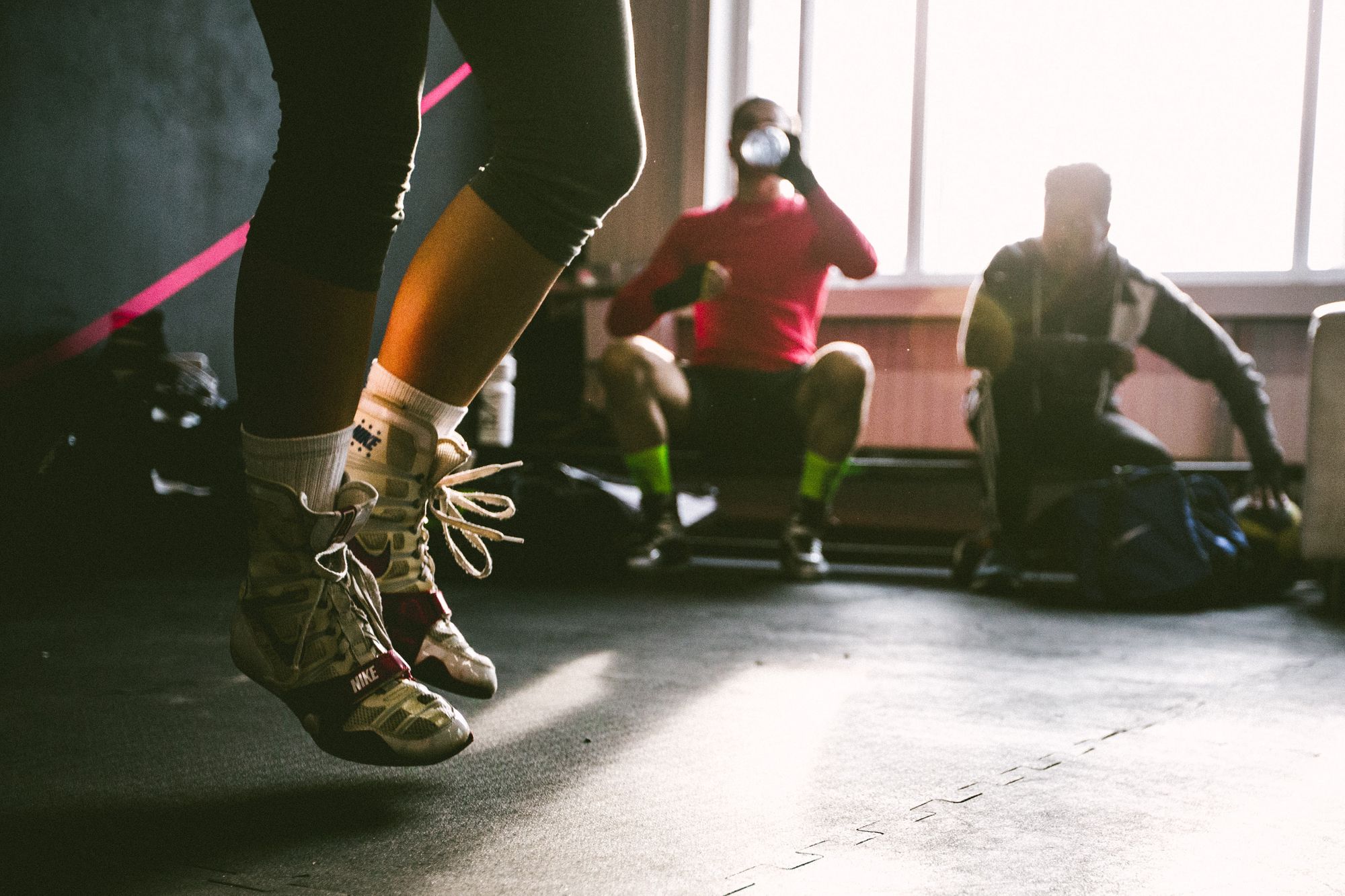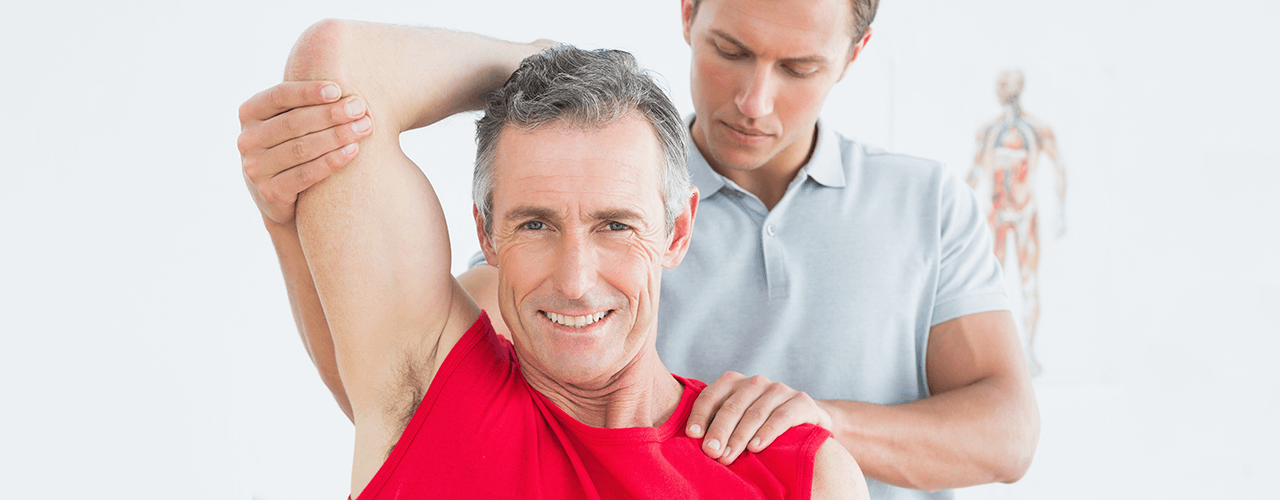Since before the days of Jack LaLanne introducing calisthenics to a 1950s American television audience, we as a society have been increasingly equating exercise with health and wellness… and rightly so.
It’s common understanding today that exercise has physical and mental benefits and is part of our conception of wellness, but this hasn’t always been so. It wasn’t too long ago in food-scarce times that people thought more layers of fat meant more health. So what will we think about physical fitness in the future and what role should the healthcare industry play in our fitness goals?
Landscape
You can’t throw a wearable fitness tracker without hitting a gym, home workout system, group class, or an app featuring a personal training or weight loss program these days. Every human with a smartphone has some data about their activity they can choose to take advantage of (or ignore). While working out has been popular for decades, we find ourselves in the era of metrics. Metrics are nothing new; BMI, inches, pounds, calories- but never before have we had so much data. And it’s only increasing.
"The market size, measured by revenue, of the Gym, Health & Fitness Clubs industry is $34.1bn in 2020."
-Ibis World
"Roughly one-in-five U.S. adults (21%) say they regularly wear a smart watch or wearable fitness tracker"
-Pew Research Center survey conducted June 3-17, 2019.
"2019 Global Wearable devices market is 26.43 billion"
-Statista.com
Health insurance companies are providing fitness trackers and gym memberships at a discount for incentivization programs in the hopes that they’ll be able to stem some of the ill health effects that come from a sedentary lifestyle and pervasive poor nutrition habits. Some health network campuses are providing yoga classes for members/patients to promote healthy living and align themselves with value-based preventative care.
"$117 Billion in Annual Health care costs are associated with inadequate physical activity"
-Center for Disease Control
Drivers
Although the trends change, the drivers in this category remain as they always have been, performance, appearance, pain relief and convenience.
“People only change for two reasons; vanity or pain.”
-Onyia Pemberton, therapeutic massage practitioner and personal miracle worker
People want to perform better
Today is a golden heyday for people who want to apply metrics to their workouts. There are currently a growing number of advancements when it comes to measurement and tracking; Fitness apparel companies are creating smart clothes and shoes with a fleet of sensors to track steps, speed, and movements across the body. Of course our devices are getting smarter. Watches, wearables (and soon headphones) can track heart rate, steps, speed, and more.

Supplements to boost performance have been around for a long time. The ubiquitous GNC brand was founded 85 years ago and although it has suffered dips in popularity along its past, it has continuously found ways to position their products to fuel hope in increased wellness and performance. Now, there are also smart clothes that can enhance your performance with chemical and vitamin supplements. Under Armour is working on clothes that can release chemicals such as magnesium to get absorbed by the skin and help reduce blood pressure and regulate your heartbeat while you workout.
Of course access to information drives performance enhancement trends as well. As the performance science for professional athletes gets tested on an elite level, the advancements trickle down and now us regular folk can fine tune our own enhancements knowing what NBA players are doing to amplify their own game. As the granular training for professional athletes becomes more transparent, people have started to be more granular in their notions of working out. Now preparation/warm up, performance, recovery, and prevention are all more common considerations in amateur workout vernacular.
People want to look good.
While we as a society have embraced more body types in media, weight loss remains a high motivator for exercise. In a survey administered by the National Institute of Health, women reported exercising for weight loss and toning more than men, who reported exercising for enjoyment more than women.
"There are 34,479 Weight Loss Services businesses in the US as of 2020."
-Ibis World
People want to feel good
Do you have a hunchback? Me, too. Apparently we’re not alone in slouching at our desk or incessantly looking down at our phone. Studies show that neck flexion (head droopiness, also called "text neck") increases dramatically the longer you're in front of a screen. During this pandemic,
Physical Therapy is an increasingly popular method of treatment and it’s not just injuries, but rather the pains that stem from inaction and poor ergonomics that has people seeking help in the form of prescribed exercises.
There are also a number digital posture wearables and physical braces (all conveniently available on Amazon) vying to help us combat our Quasimodo tendencies.
People want easier and more effective ways to do all of the above
When it comes to new workout technology the key words are personalization and convenience. Many platforms are capitalizing on people continuing search for a holistic home workout regimen at home (like Mirror and Tonal). There are many apps that take in your goals and preferences and create a customized workout program or potentially pair you with a specific personal trainer. Other machines allow you to join different types of group classes or virtual courses based on your goals (peloton).
Future of Physical Fitness Predictions
Working Out
More metrics please. Look for increasing numbers of devices and wearables that can take in new data like O2, lactic acid, breath rate and blood pressure levels in addition to heart rate, speed, elevation etc. Better bio visualization and feedback will be part of new data. There will be easier ways to monitor muscle engagement, form and strength in real time (un-engage your triceps and focus on your deltoids). This will be in addition to understanding chemical changes and depletions in the body in real time.

Beyond more numbers, people will always seek more fun, motivation, and engagement. There’s a scene from a semi-watchable Michael Bay movie set in the future called The Island where Scarlett Joanssen and Ewan McGregor’s characters are fighting each other Street Fighter II style in a virtual reality ring where they are being mimicked exactly by avatars. I remember thinking that if working out alone was that satisfying and multisensory I’d probably do it more. Well... I’m about out of excuses. We’re almost there now. This type of video game immersion exercise will become better and more realistic. Think MMORPGs where your character will only succeed if your broadsword swings and footwork are on point.
Ergonomics/Posture
While it’s possible that our culture will start to embrace our smartphone slouch, more likely ergonomic correction will be on the upswing. Beyond standing and treadmill desks, look for increased mobility solutions during work and device viewing screens and controls that are decentralized (imaging scrolling through your phone with hand gestures down by your waist while you stand tall with a screen by your eyes) .
Physical Therapy will be an even more popular self-referred treatment to help undo the effects of a sedentary lifestyle. Whether they be digital or in-person, physical therapy and personal training will become more commonly used in tandem for the more casual athlete.
Studies are coming out now about how our over extended necks are pinching vital nerves and causing lasting damage. As this becomes more widely known, people will want to understand and quantify the damage done to their nerves and related systems.
Fitness Identity
Our shared sedentary lifestyle and poor nutrition will become more an issue as our life expectancies shorten. People will care for ailing parents at a younger age and as a result people will want to identify with a lifestyle that is counter to what caused their health issues.
Healthcare Opportunities
So how could and should healthcare participate in physical fitness trends and ideals of the future?
Healthcare Networks
Today, doctors are dangerously viewed as miracle workers who are keys to magical pills that fix you with no effort on your part (you mean they’re not?...) . Now is the time to educate your patients and help them embrace Physical Therapy as a first line of defense in musculoskeletal issues.

The industry has an opportunity to make PT easy, more accessible and provide digital platforms to assess compliance and correct form for all prescribed exercise regimens. And highlight the fun parts! Physical therapists give you massages for goodness sake. Ensure your PT’s are up-to-date with the latest myofascial release training. Emphasize the potential PT relationship and how your physical therapist is a great person to have on your team, rooting for you and partnering with you to help your body operate to the best of your ability.
We see a lot of sports medicine departments becoming the official providers for professional sports teams. While this is lovely marketing, it’s not necessarily going to persuade me (average human) to seek out everyday care with the group. Become the providers that can help make sense of people’s physiological data and goals. Deliver guidance and programs beyond advice to hit a weight loss and bmi goal. Differentiate by highlighting how your providers can become partners through any transformation journeys patients want to go on. Further deepen your position as a fitness authority by certifying or partnering with personal training programs, gyms, exercise brands and methodologies.
Health Insurance
In the future it won’t be enough to offer cheaper gym memberships (although that will still be a popular offering). You’ll need to make it easier for whole families to stay fit. Provide access to (or create) family fitness programs that deliver ways to impart health habits to the younger generation and normalize everyday movement.
Provide portals and platforms that get to know your covered population as individuals and family groups. Help understand and promote active hobbies and present personalized offerings that are local, motivational and fun. Insurance companies have an opportunity to develop a digital platform to assess and reward certain types of physical activity. Beyond this, you can use the platform to assess and mitigate risk for particular conditions and monitor certain physical markers for worsening symptoms for known medical conditions
On the hunchback front… provide reimbursements for ergonomic assessments for employers that utilize your insurance products. It’s a win win proposition and makes your product more attractive to employee benefit managers.
Medical devices and technology products
Of course, everybody and their mother will provide more fitness and body data but the secret sauce will be in collecting that data from various platforms and synthesizing it to make personalized actionable recommendations to improve performance and reach goals.
Make working out more transparent for people like me.
Bootcamp coach: “Engage your deltoids…”
Me: “ I thought I was...”
Help people visualize what is happening in their bodies during a workout and get feedback as to which muscles are being engaged, hydration levels, breath rates. and help them set goals for form, strength, speed and other behaviors and bio-markers.
And can somebody please, please, make a realistic full body sensor, immersive virtual reality workout where I can get assessed and train my real life body to unleash my inner Chun-Li. Allow me to set goals that translate into new, stronger power moves as I get physically faster, more flexible and increasingly superior at (virtually) beating up my husband.
Whew! Thanks for reading. We didn’t talk much here about the mental wellness and nutrition elements of physical fitness but I’ll be covering those in other Future of Wellness in Healthcare articles for Lux @Propane.
By Kim-Minh Huberwald
Director of Strategy at Propane
Propane, Digital Agency - San Francisco
San Francisco, CA - 94110
415 550 8692